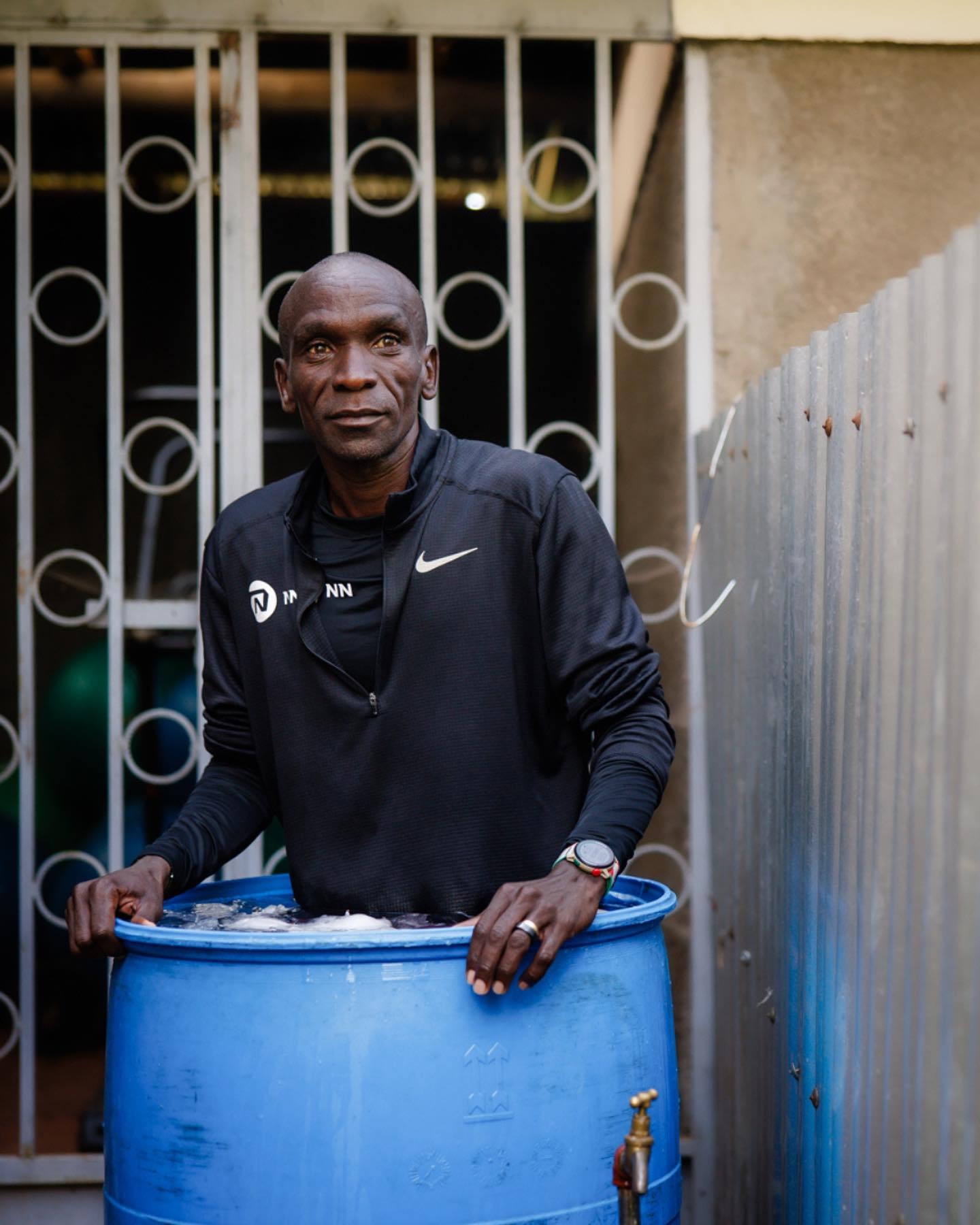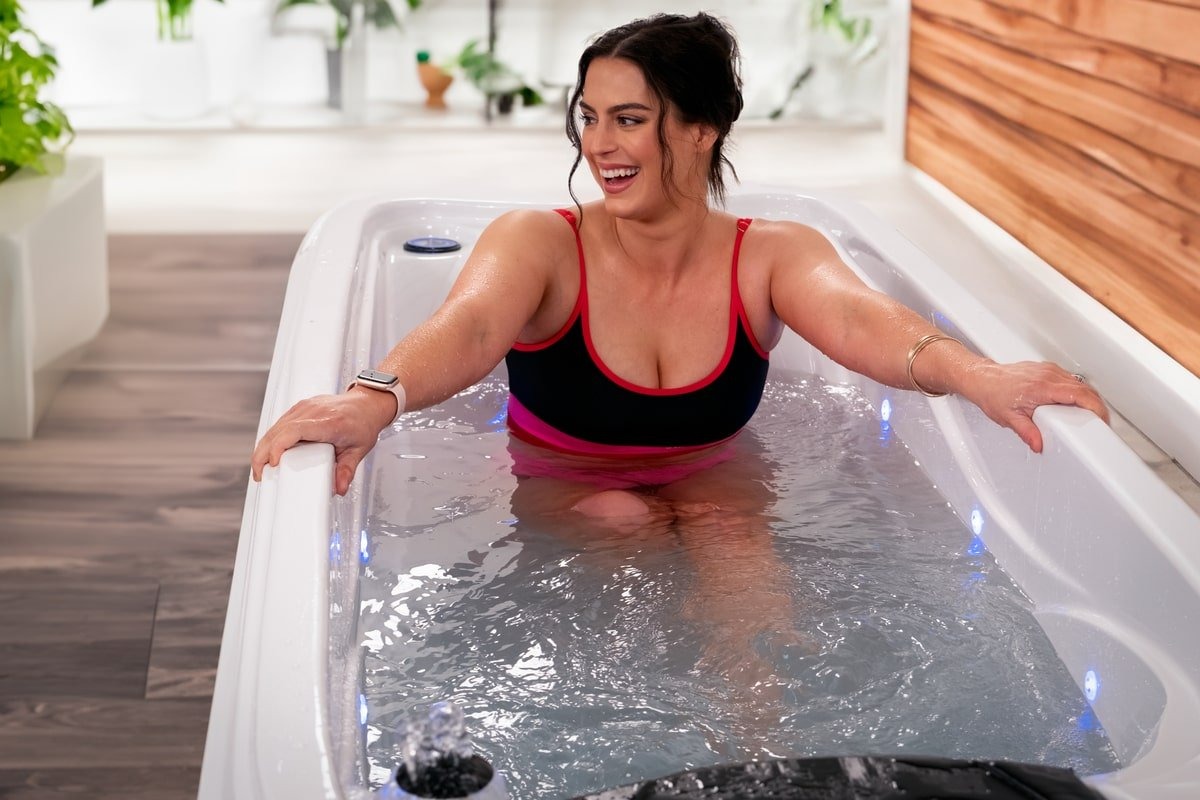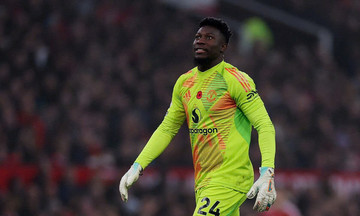Cold water immersion (CWI) is a therapy where the body is directly exposed to low-temperature water, typically below 14 degrees Celsius. Former marathon record holders Eliud Kipchoge, Paula Radcliffe, and many other famous athletes have used this therapy as a way to recover after high-intensity training to reduce delayed-onset muscle soreness (DOMS), a phenomenon that usually appears after 24 to 48 hours due to micro-trauma and inflammation in muscle fibers.
This therapy can be safely performed at home by soaking in an ice bath or taking a cold shower. However, before applying it, one should carefully evaluate the relevant information, including the risks outlined below. Those with underlying medical conditions such as angina (or other cardiovascular diseases), skin sensory disorders, poor circulation, or epilepsy should consult a doctor before trying CWI.
 |
Kipchoge in a makeshift cold immersion tub made from a plastic drum at his training camp in Kaplagat, Kenya in 2024. Photo: NN Running |
Kipchoge in a makeshift cold immersion tub made from a plastic drum at his training camp in Kaplagat, Kenya in 2024. Photo: NN Running
What happens during cold water immersion?
When immersed in an ice bath or having cold water poured over the body, blood vessels constrict and narrow. Upon stepping out, the temperature change causes them to quickly dilate again. This process creates some positive effects for the body:
: Helps eliminate lactic acid.
: Transports oxygen and nutrients to muscles, supporting recovery.
: Increases blood flow and accelerates circulation.
: Improves mood.
: Supports fat burning and weight loss.
: Reduces swelling and limits tissue damage.
Benefits of cold water immersion
While this may be something few want to try immediately after a strenuous workout or an exhausting race, immersing oneself in cold water is especially beneficial for both body and mind.
Promotes recovery. One of the biggest benefits of CWI for runners is accelerated recovery. “By causing vasoconstriction, this method helps reduce the inflammatory response in peripheral muscle groups, especially leg muscles, after exercise," explains Dan Kett, a physiotherapist from the British Sports Medicine platform P3RFORM. "CWI is most suitable to support recovery, helping to increase training frequency or prepare for optimal performance, such as a race or a personal record attempt.”
This view is reinforced by a 2019 study published on Tandfonline, which showed that athletes using CWI after training significantly improved their sprint speed after just 24 hours.
Reduces muscle soreness. "CWI also reduces signals in the nerve endings that sense pain. Combined with the anti-inflammatory mechanism, this therapy is used to reduce DOMS," says Kett.
Faster recovery allows runners to train more frequently, thereby improving cardiovascular fitness and overall performance.
"However, if you feel that muscle strength or endurance is limiting your ability to compete, this therapy may not be appropriate. Accepting DOMS during rest days will allow the body to adapt and become more resilient, creating a foundation for long-term improvement," Kett advises.
 |
Cold immersion creates a refreshing feeling, reduces pain, and accelerates recovery after strenuous exercise. Photo: Vital Ice |
Cold immersion creates a refreshing feeling, reduces pain, and accelerates recovery after strenuous exercise. Photo: Vital Ice
Is cold water immersion truly beneficial?
Not only does it support recovery, but CWI is also recognized for potentially improving physical fitness, mood, the immune system, and even libido. In terms of mood, a recent study found that cold showers made participants feel more energetic, alert, focused, proud, inspired, and less anxious, thereby promoting positive emotions and self-regulation. Some other studies also suggest that this therapy can slow the progression of dementia and help reduce anxiety.
A 2020 study published in the International Journal of Environmental Research and Public Health also indicated that CWI positively impacts the cardiovascular system, the endocrine system, and mental health, including the potential to reduce symptoms of depression.
However, some other studies have drawn more cautious conclusions. The reason is that when assessing physical and mental benefits, it's difficult to determine whether they come directly from CWI or from other factors such as an active lifestyle, social interaction, or effective stress management.
A 2022 report synthesizing 104 studies on CWI also concluded that it remains a "controversial topic." Some studies do not recommend CWI as a standalone measure, and evidence of the effectiveness of this combined technique is still limited and lacks reliability.
Therefore, although CWI is believed by many to be beneficial for recovery and health, current scientific evidence is not strong enough to make absolute claims, and it clearly should not be considered the only method to rely on. Runners should not view CWI as a replacement for other recovery platforms such as sleep, nutrition, and training load adjustment.
When to use and avoid cold water immersion
Runners should use CWI after very strenuous runs (long tempos, high-volume intervals, lots of downhill running, long runs close to race pace) or after competitions, especially if you need to run hard again within the next 24–48 hours.
After strength training sessions, uphill sprints, etc., aimed at increasing muscle mass or strength, runners should not use CWI, as this therapy reduces the muscle hypertrophy response after these sessions. You also don't need ice baths after recovery runs or low-intensity runs.
The appropriate 10-15-10 cold immersion formula
According to research by the Gatorade Sports Science Institute (USA), the classic and easy-to-remember formula for runners when immersing in cold water is:
: 10–15 degrees Celsius (i.e., the water only needs to be cold, not deeply cold, or with too much floating ice)
: 10–15 minutes (immersion time)
: Deep immersion (ideally up to the chest/hip joint)
This formula was also mentioned by American exercise physiologist Dr. Shona Halson on the Sigma Nutrition sports nutrition podcast. “With CWI, the process of 10–15 minutes of immersion at 10–15 degrees Celsius is appropriate. And it's better if you immerse in a standing position," she said.
If the family does not have a specialized tub or deep immersion pool, runners can use a home bathtub, a cool swimming pool, a stream, or a safe lake. Alternatively, runners can also use a cold shower divided into sets of 5–8 minutes each. If choosing this therapy during hot weather, you need to enter the water slowly, controlling your breathing, especially in the first 1–3 minutes, to avoid cold shock.
 |
A home bathtub can also be used for cold immersion. Photo: Dr Wellness Cold Series |
A home bathtub can also be used for cold immersion. Photo: Dr Wellness Cold Series
The 6-step cold immersion process
: Preparation: Water thermometer; warm towel/clothes; dry clothes; warm, light drink; set a timer for 10–12 minutes.
: Cool-down: 5–10 minutes of light walking/dynamic stretching, a quick shower to remove sweat.
: Enter the water slowly: Immerse up to the knees, then gradually up to the thighs, hips, and chest. Runners should breathe slowly at 4 to 6 breaths per minute to overcome the gasping reflex in the first 1 to 3 minutes.
: Maintain a temperature range of 10–15 degrees Celsius for a maximum of 15 minutes; no need to submerge the head, and avoid shaking too vigorously.
: Exit the water and actively warm up: Dry off, dress warmly, and walk lightly for 3 to 5 minutes. Runners should avoid taking a hot shower immediately, which can cause a sudden increase in body temperature. A warm shower can be taken after about 10 to 15 minutes.
: Replenish energy: 20–40g of protein and carbohydrates within 30 to 60 minutes, replenish water and electrolytes, and try to get enough sleep.
CWI is not a magic bullet, but it is a useful tool if runners know how to apply it correctly. This therapy will be like a situational lever, helping you overcome heavy workouts or periods of dense competition.
"I usually do CWI 4 times a week, after hard workouts. But if I train near a lake, I just sit down in the lake. This therapy really helps me recover better," Paula Radcliffe, the women's marathon record holder from 2003–2019, once said in the British newspaper The Guardian.
In a talk show while training for the INEOS 1:59 Challenge sub-2 marathon in 2019, Kipchoge also praised this therapy. He said at the time, "I immerse myself in an ice bath twice a week, for 10 minutes each time. It helps reduce inflammation for long runs or speed workouts.”
Nhat Tao compiled












